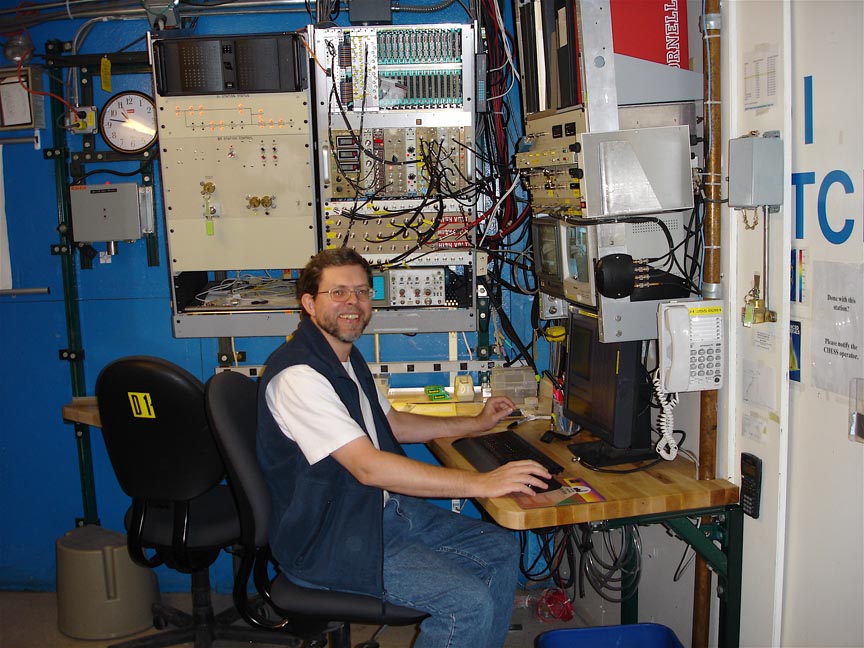X-RAY RUNS: Apply for Beamtime
2017 Nov 1 - Dec 21
2018 Feb 7 - Apr 3
2018 Proposal/BTR deadline: 12/1/17
2018 Apr 11 - Jun 4
2018 Proposal/BTR deadline: 2/1/18
Contact: E. Fontes (ef11@cornell.edu)
The x-ray beamline called “D-line” at the Cornell High Energy Synchrotron Source (CHESS) has served many purposes over the years but had consistently had one major problem: lack of space for the users!
The experimental “hutch” area was long enough – nearly 4 m. - to perform small-angle x-ray scattering (SAXS) experiments on materials with spacings up to 1000 Å. Under the guidance of staff scientist Detlef Smilgies, the station was fitted out for grazing-incidence SAXS – or GISAXS – work. GISAXS is ideally suited to study nanostructured organic thin films, consisting of block copolymers, self-organized nanoparticles, or nanocomposites. In addition, thin films of materials for organic electronics, from small molecules to semiconducting polymers, have been studied recently at small and wide scattering angles by a steadily growing community of users.
The user control area just outside the hutch door, however, was only shared space in the hallway leading to the F3 station. The D-line users’ chairs had to move in and out each time neighbors walked to F3 or the laser printer. Buying an additional printer reduced some of the traffic, but time was ripe for major upgrades and reconfiguration during the 2006 summer shutdown.
Creating better user space went hand in hand with upgrading the station controls and removing antiquated electronics. To start, new LAN-based stepping motor drivers were installed inside the optics room and hutch, increasing the number of independent axes from 24 to 48. An ancient CAMAC interface was replaced by modern high-density VME modules. The patch cable system was redesigned, giving the station a better, more flexible way to convey analog signals between inside and outside the hutch. A new motorized optical table was added to provide a stable base for the downstream x-ray area detector.

Staff Scientist Detlef
Smilgies enjoys the reconfigured
D-line cockpit and
user desktop area.
The user area was redesigned in a “cockpit style”: all electronics were moved to wall-mounted racks, leaving desk space and leg space below. CHESS technical staff member, David Jones, played interior designer (and strut channel wizard!) to build an L-shaped tabletop beneath the racks, more than tripling the previous desk area. Dave also installed new lighting, giving the formerly somewhat gloomy station a bright new look. Chairs now fit under the desktop and up to three users can sit simultaneously in front of samples, notebooks, or laptop computers. Technical staff members Ted Luddy, Gino Melice and Phil Sorensen helped with the installation of the motor drives, VME crate and associated modules, and software updates and configuration.
Visiting scientists will also appreciate improved data collection capabilities and data quality. First and foremost, the primary beam-defining aperture was moved upstream by nearly a meter and placed inside the shielded optics room. Diffuse scatter from slit edges and windows has been mostly eliminated and background noise dramatically reduced. The specimen stage also moved upstream, to be firmly seated on the upstream optical table, and specimen to detector distances can now reach almost two meters. A new modular vacuum flightpath accommodates sample-detector distances between 300 mm and 1800 mm. As a result, the station can routinely probe characteristic length scales ranging from 0.3 nm up to almost 200 nanometers.
